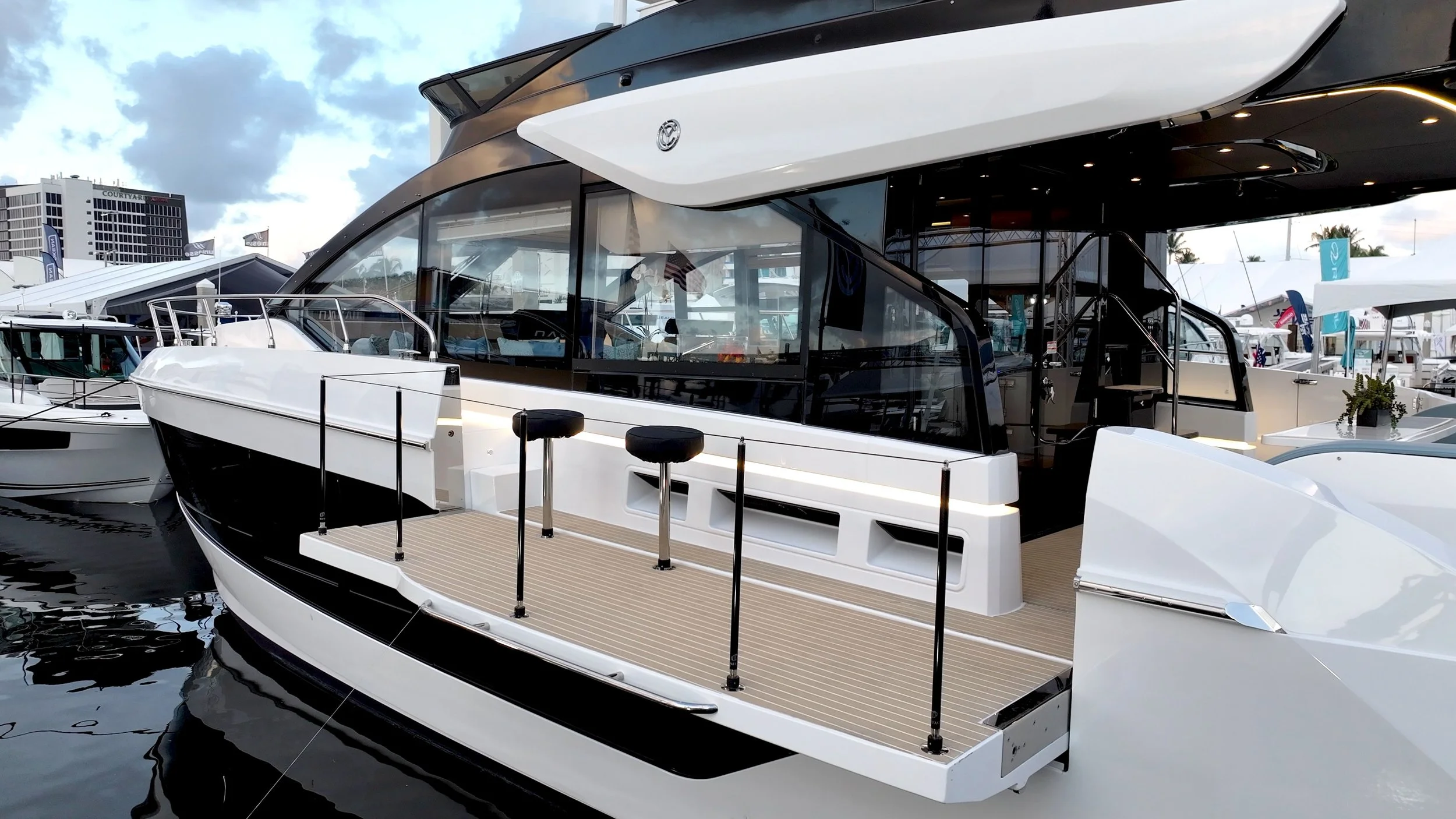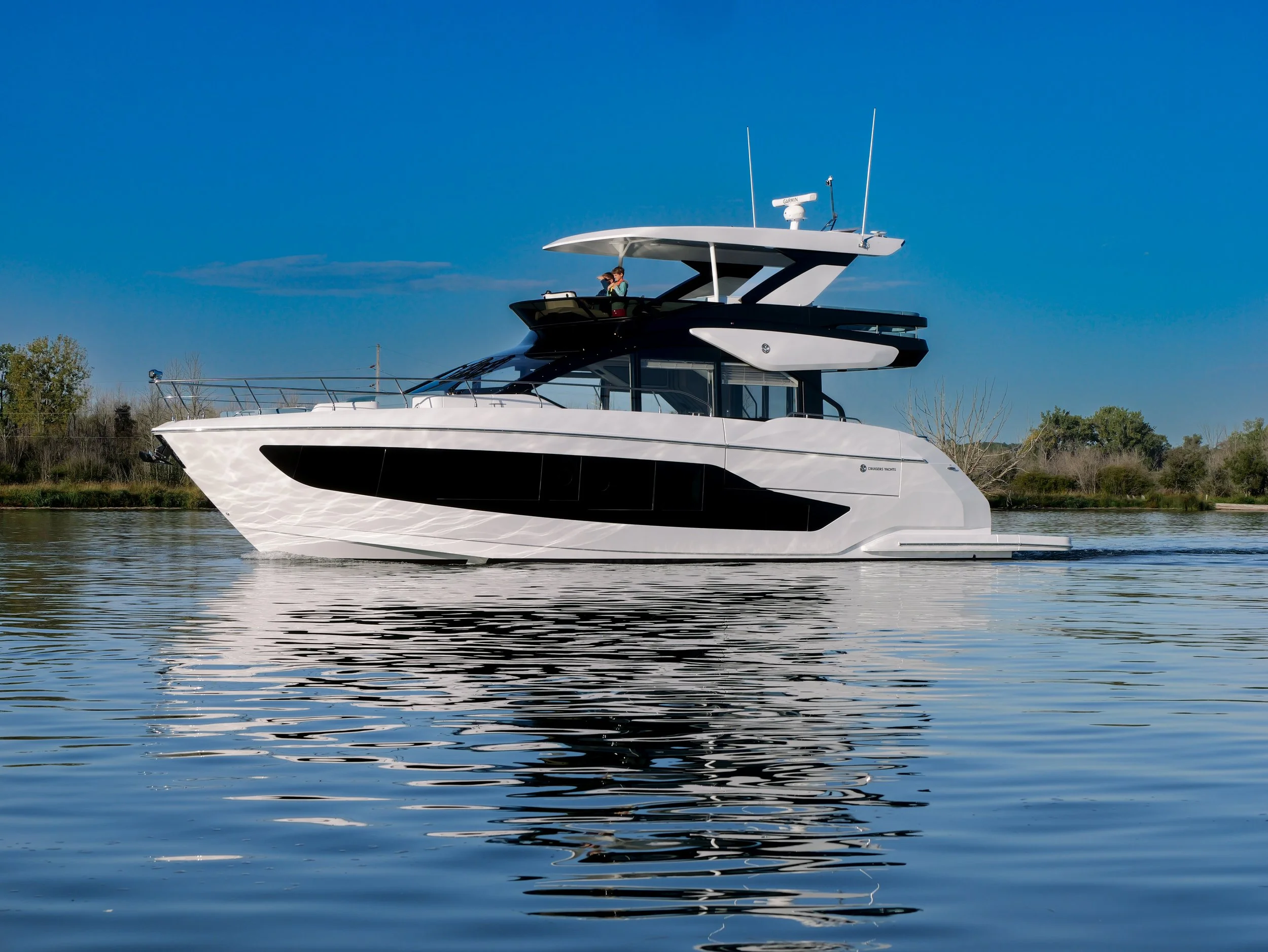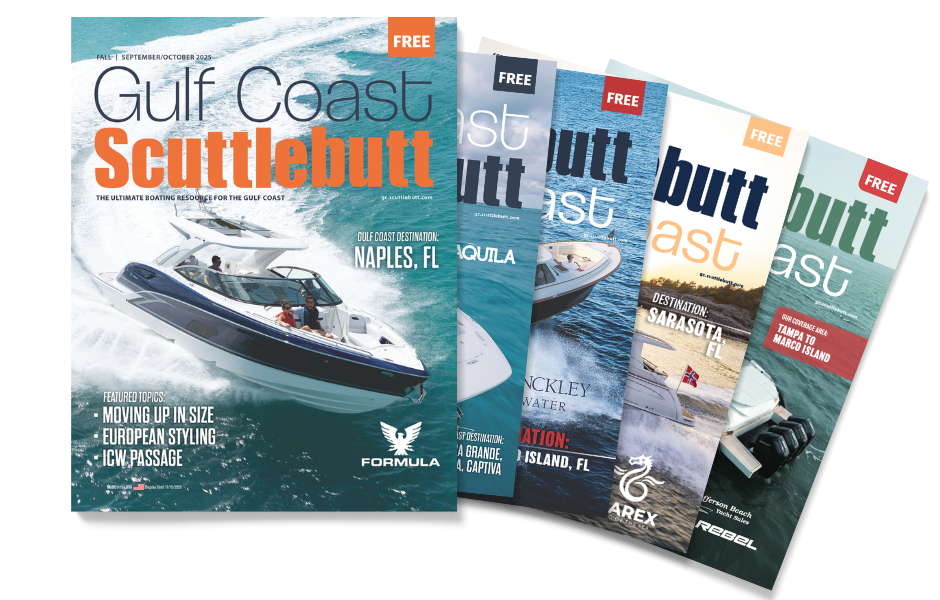Euro-Inspired Elegance
Breaking down the basics of European styling, and how American boat designers are creating their own interpretations.
Walk the docks at any major U.S. boat show today—from Fort Lauderdale to Newport—and you're likely to hear the same refrain among serious buyers and designers: "That looks European." And it’s not just about appearances. Across the American marine industry, boat builders are taking cues from designers across the pond and increasingly borrowing from Europe’s design influences, incorporating their own traditional sensibilities with sleek lines, minimalist interiors, and cutting-edge functionality rooted in decades of continental craftsmanship. What can the consumer expect? A new era of American boat design—where performance and reliability meet aesthetic refinement and global appeal.
European boatbuilders, particularly in countries like Italy, the Netherlands, France, even Poland have long set a high bar when it comes to yacht styling. The likes of Riva, Azimut, Wally, and Princess Yachts have defined the luxury market for decades with their fluid lines, panoramic windows, architectural interiors, and an uncompromising attention to detail. Their designs are often inspired by automotive cues, fashion, and high-end residential design—each vessel a floating expression of style.
While American builders historically leaned into utilitarian layouts, rugged exteriors, and an emphasis on function over form, today's buyer expects more. The demographic is younger, more design-conscious, and globally influenced. These boaters are not just looking for a fishing machine or weekend cruiser—they want floating homes with spa-like bathrooms, chef’s kitchens, retractable terraces, and indoor/outdoor fluidity. In short, they want Euro elegance with American brawn.
So what exactly constitutes European styling, and how is it being translated into American boats?
1. Streamlined Superstructures and Plumb Bows
Modern European designs favor bold, upright bows and low-slung profiles that give yachts a futuristic, aggressive stance. American builders, especially in the express cruiser and sport yacht segment, are quickly adopting these lines. Builders like Cruisers Yachts, Tiara Yachts, and Formula have all released models in recent years with more European-like sheer lines, window integration, and proportions that echo the latest from Sunseeker or Pershing. Plumb bows are also becoming a standard it seems, with builders able to get more speed and a comfortable ride, all while cutting back on fuel consumption.
2. Open-Plan Interiors
Open layouts that connect the helm, salon, galley, and cockpit into one seamless, social space are now almost expected. European builders perfected this concept—especially on smaller yachts—and now American builders are catching up. Sea Ray’s SLX series, for instance, showcases wide-open dayboats that blur the lines between interior and exterior.
3. Contemporary Materials and Finishes
American boat interiors no longer favor dark cherry woods and traditional finishes. Inspired by European minimalism, builders are turning to high-gloss lacquers, matte walnut, integrated LED lighting, floating furniture, and frameless glass. The aesthetic is now light, airy, and modern—more akin to a SoHo loft than a coastal cottage.
4. Modular Furniture and Flex Spaces
Adaptability is key in Euro design. Builders like Beneteau and Jeanneau have long embraced convertible spaces—sunpads that turn into lounges, tables that fold into beds, or cockpits that transform at the touch of a button. American brands like Boston Whaler and Regal have started incorporating these clever space-saving solutions, particularly on their larger models.
5. Emphasis on Social Zones
The Euro influence places high value on maximizing outdoor entertaining space. Foredeck lounges, aft terraces with convertible seating, and hydraulic swim platforms are all design elements becoming commonplace in U.S. builds. Brands like Scout Boats and Chris-Craft have been particularly responsive in offering sun decks and alfresco dining setups that rival European dayboats.
Who’s Leading the Way in the U.S.
Brands with European influence to check out at a boat show near you soon:
— MJM
— Navan
— Four Winns
— Wellcraft
— Valhalla Boatworks
— Axopar
— Hatteras
— Sea Ray
— Bayliner
Even in the pontoon category, you’ll be able to find European influence from brands like Bennington, Barletta, Manitou, Harris, Avalon, Godfrey and Viaggio.
Some American builders have gone beyond simply borrowing European cues—they're actively integrating European talent and partnerships into their design process.
Slepsk, the builder based in Poland, produces for XO Boats, Axopar, Yamarin, Bayliner, Sea Ray and Wiszniewski to deliver ultra-luxurious interiors and contemporary layouts tailored for the American market.
Viking Yachts’ Valhalla line has taken on a more European flavor in its newer center consoles, with sleeker styling and elevated fit and finish.
Cruisers Yachts collaborated with Luiz De Basto from DeBasto Designs based in Miami, FL for their 57 FLY interior.
Even sportfishing-focused builders are feeling the pressure. Brands that traditionally prided themselves on rugged utility are now being asked to deliver boats that also look the part. Design-savvy buyers want the fishability of an American sportfisher with the style of a Mediterranean motoryacht.
Despite the trend, adapting European aesthetics isn’t a copy-paste exercise. American boaters have specific needs—larger air conditioning systems for hotter climates, different safety requirements, bigger appliances, and more storage space. Builders must find the balance between form and function, without compromising seaworthiness or ease of maintenance. Moreover, production methods in the U.S. often differ from those in Europe. Where European boats may favor semi-custom or boutique construction, American brands typically scale with mass-production efficiencies. Integrating bespoke-looking design into scalable platforms remains a key challenge—but one many are now embracing with success.
Buyers are responding. The convergence of European style and American build quality has proven a winning combination for today’s discerning customer. Boaters want to feel like they’re part of a global aesthetic conversation, and builders are stepping up to meet that demand. In the brokerage market, newer American models with Euro styling hold value better and attract broader interest—especially among international buyers, which there are many in the Florida market. Charter clients also expect more modern design language, pushing builders who cater to this market segment to think globally.
As the American boating market continues to evolve, expect this transatlantic collaboration to deepen. Designers, who in the past have kept to their European roots and partners, are increasingly working on U.S.-built yachts. Likewise, American naval architects are studying European ergonomics, systems integration, and onboard flow in more detail than ever.
The future of American boatbuilding will be defined not just by how well it performs, but how good it looks doing it. Because in today’s marine world, beauty and brawn are no longer mutually exclusive—they’re expected.




